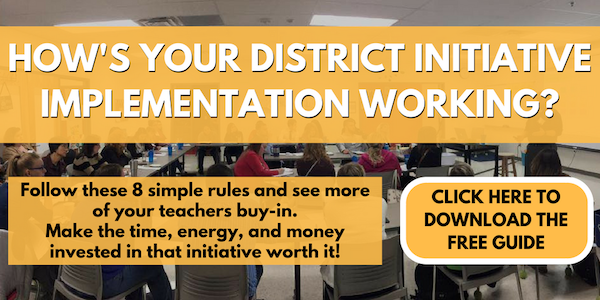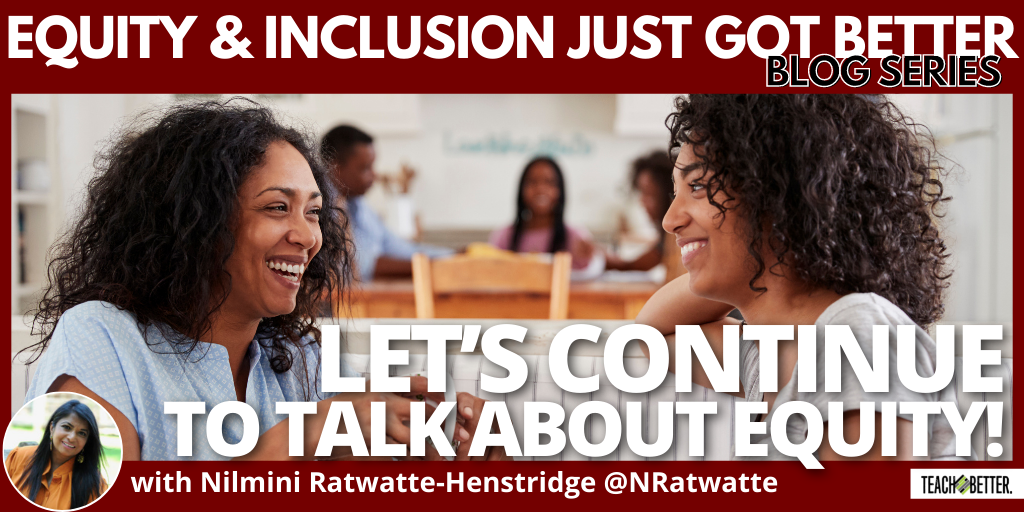TL;DR:
- Teach lessons that encourage a growth mindset.
- Definitions give us working knowledge to understand more about equity and anti-racism.
- Be an anti-racist educator!
“Equity and Inclusion Just Got Better” Journaling/Reflection Questions
- What is a lesson idea that involves teaching about a topic that matters to your students?
- Write down a time you didn’t advocate for change with something that was not right (racism, bias, discrimination)?
- How can your school change one practice to be more inclusive? Which step of my 6-Step action plan would you focus in on?
We will be reflecting on 6 definitions in this blog. As I type on a warm day, it is my hope that you can reflect upon your journey towards being an anti-racist teacher by enhancing your perspectives as you read. Most importantly, I’m going to ask you to seek out examples in a school setting for which you could advocate.
One of my favorite educational quotes I wanted to include in the blog shares the importance of storytelling in education.
“Education is simply the soul of a society as it passes from one generation to another.”
– G.K. Chesterton
I encourage you to learn and reflect on this educational journey. Really walk in a radicalized person’s “shoes” and advocate for them. They could be your colleagues, your students, or parents in your community.
Know your resources in a school setting.
Ask your professional network.
As a brown educator, I stand uniquely in the middle and observe, making spaces for myself so I can advocate for my students as I teach about inclusive practices.
As a Brown educator, I stand uniquely in the middle and observe, making spaces for myself so I can advocate for my students as I teach about Inclusive practices. Click To TweetHere Is My Plan of Action!
I love teaching by giving examples. When I ask the question, “What does that look like in a school?” try to think, write, and reflect on real-life examples to apply the definitions to your life.
Step 1: Equity
What does it look like in a school?
Do you treat every student the same or give students what they need to be successful?
If you give differentiated instruction and each individual student what they need to succeed, that is what equity looks like in the classroom.
Step 2: Inclusive Education
What does it look like in a school?
Being inclusive in the school setting is accepting all cultural values and finding ways to respect all religions. It’s making accommodations and modifications to ensure all students are successful.
Step 3: Discrimination
What does it look like in a school?
When some students face systematic barriers that impact their chance to be successful, it creates invisible, yet very real obstacles to achieving their dreams and pursuing their goals and potential.
Step 4: Microaggression
What does it look like in a school?
Microaggression in a school setting would look like not being included. It would make teachers or students feel like they don’t belong. It’s making them feel like they can’t contribute their knowledge. For example, not being given the job because of your race, but blaming it on the qualifications would be a microaggression many radicalized folks would face. A solution would be to have hiring practices that are transparent and rely on interviews. It means really getting to know the candidate and hiring whoever is best for the job.
Step 5: Anti-Racist
What does that look like in a school?
To be an anti-racist educator, you will feel comfortable enough to question what is happening. You suggest solutions and find common ground to ensure all community members, staff, and students feel like they belong and do not face acts of discrimination.
[scroll down to keep reading]
Step 6: Advocate
What does that look like in a school?
If every single person advocates, then the system will change for the better. It will look like an inclusive school system. When you don’t advocate, racism, bias, and discrimination spread. The system becomes flawed.
There are a lot of things to be grateful for during this season of Thanksgiving celebrations. I am so thankful for my fellow educators and readers who share with me this journey through educational blogging as we all take moments to reflect, learn, and collaborate in our field.
Yours in Education,
Nilmini
Resources
Kendi, Ibram X. 2019. “How to Be an Antiracist”
Eakins, Dr. Sheldon L. “Teaching Through A Culturally Diverse Lens”. Leading Equity Center.
About Nilmini Ratwatte-Henstridge
Nilmini Ratwatte-Henstridge teaches in Brampton, Ontario, Canada. She was born in Sri Lanka and immigrated to Canada with her family. As an Elementary School Teacher who is passionate about Equity, Social Justice, and Human Rights in education, she enjoys teaching the younger generation to be global-minded citizens.
Discovering the world by connecting with others is an opportunity that we have today in our society today and she loves meeting new people! She is always learning while traveling to understand the inter-connectedness of this beautiful earth we live in! Nilmini LOVES cooking great meals, watching movies, and the latest fashion trends! Family and friends are close to her heart as she looks forward to balancing social media and navigating professional learning communities in education to network globally this year!



